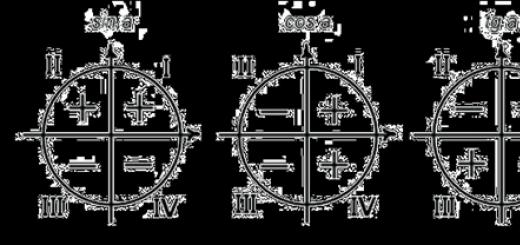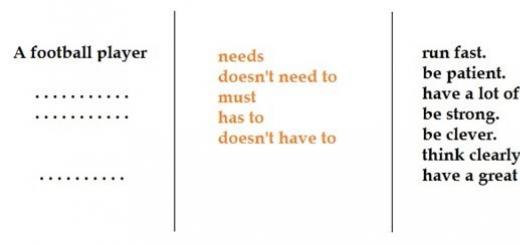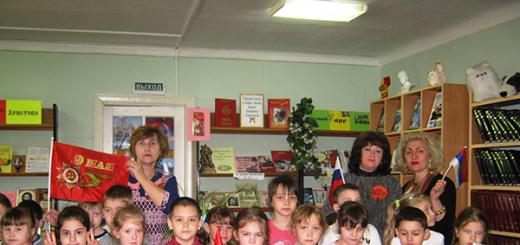Officially, the Vietnam War began in August 1964 and continued until 1975 (although American direct involvement ceased two years before the end of hostilities). This clash is the best illustration of the instability of relations between the USSR and the United States during the Cold War. Let us analyze the prerequisites, highlight the main events and results of the military conflict that lasted eleven years.
Prerequisites for the conflict
The actual root cause of the conflict is the logical desire of the United States to surround the Soviet Union with those states that will be controlled by it; if not formally, then in fact. At the time the clash began, South Korea and Pakistan were already “conquered” in this regard; then the leaders of the United States made an attempt to add North Vietnam to them.
The situation was conducive to active action: at that time, Vietnam was divided into North and South, and a civil war was raging in the country. The South side requested assistance from the United States. At the same time, the northern side, which was ruled by the Communist Party led by Ho Chi Minh, received support from the USSR. It is worth noting that the Soviet Union did not openly - officially - enter the war. The Soviet document specialists who arrived in the country in 1965 were civilians; however, more on this later.
Course of events: the beginning of hostilities
On August 2, 1964, an attack was carried out on a US destroyer that was patrolling the Gulf of Tonkin: North Vietnamese torpedo boats entered the battle; A similar situation repeated itself on August 4, resulting in Lyndon Johnson, then President of the United States, ordering an air strike against naval installations. Whether the boat attacks were real or imaginary is a separate discussion topic that we will leave to professional historians. One way or another, on August 5, an air attack and shelling of the territory of northern Vietnam by ships of the 7th Fleet began.
On August 6-7, the “Tonkin Resolution” was adopted, which made military action sanctioned. The United States of America, which had openly entered the conflict, planned to isolate the North Vietnamese army from the Democratic Republic of Vietnam, Laos and Cambodia, creating the conditions for its destruction. On February 7, 1965, Operation Burning Spear was carried out, which was the first global action to destroy important objects of North Vietnam. The attack continued on March 2 - already as part of Operation Rolling Thunder.
Events developed rapidly: soon (in March) about three thousand American Marines appeared in Da Nang. After three years, the number of United States soldiers fighting in Vietnam had risen to 540,000; thousands of units of military equipment (for example, about 40% of the country's military tactical aircraft were sent there). In the 166th, a conference of states belonging to SEATO (US allies) was held, as a result of which about 50 thousand Korean soldiers, about 14 thousand Australian soldiers, about 8 thousand from Australia and more than two thousand from the Philippines were brought in.

The Soviet Union also did not sit idly by: in addition to those sent as civilian military specialists, the DRV (Northern Vietnam) received about 340 million rubles. Weapons, ammunition and other means necessary for the war were supplied.
Developments
In 1965-1966, a large-scale military operation took place on the part of South Vietnam: more than half a million soldiers tried to capture the cities of Pleiku and Kontum using chemical and biological weapons. However, the attack attempt was unsuccessful: the offensive was disrupted. In the period from 1966 to 1967, a second attempt at a large-scale offensive was made, but the active actions of the SE JSC (attacks from the flanks and rear, night attacks, underground tunnels, the participation of partisan detachments) stopped this attack as well.
It is worth noting that at that time more than a million people were fighting on the US-Saigon side. In 1968, the National Front for the Liberation of South Vietnam switched from defense to offensive, as a result of which about 150 thousand enemy soldiers and more than 7 thousand pieces of military equipment (cars, helicopters, planes, ships) were destroyed.
There were active air attacks by the United States throughout the conflict; According to available statistics, more than seven million bombs were dropped during the war. However, such a policy did not lead to success, since the government of the Far Eastern Republic carried out mass evacuations: soldiers and people hid in the jungle and mountains. Also, thanks to the support of the Soviet Union, the northern side began to use supersonic fighters, modern missile systems and radio equipment, creating a serious air defense system; as a result, more than four thousand United States aircraft were destroyed.

Last stage
In 1969, the RSV (Republic of South Vietnam) was created, and in 1969, due to the failure of the bulk of operations, US leaders gradually began to lose ground. By the end of 1970, more than two hundred thousand American soldiers had been withdrawn from Vietnam. In 1973, the United States government decided to sign an agreement to cease hostilities, after which it finally withdrew troops from the country. Of course, we are talking only about the formal side: thousands of military specialists remained in South Vietnam under the guise of civilians. According to available statistics, during the war the United States lost about sixty thousand people killed, more than three hundred thousand wounded, as well as a colossal amount of military equipment (for example, more than 9 thousand airplanes and helicopters).
Hostilities continued for several more years. In 1973-1974, South Vietnam again went on the offensive: bombing and other military operations were carried out. The result was reached only in 1975, when the Republic of South Vietnam carried out Operation Ho Chi Minh, during which the Saigon army was completely defeated. As a result, the Democratic Republic of Vietnam and South Vietnam were united into one state - the Socialist Republic of Vietnam.
The Vietnam War lasted 20 long years. It became the most brutal and bloody military conflict of the Cold War, involving several countries of the world. Over the entire period of the armed confrontation, the small country lost almost four million civilians and about one and a half million soldiers on both sides.
Prerequisites for the conflict
If we talk briefly about the Vietnam War, this conflict is called the Second Indochina War. At some point, the internal confrontation between North and South grew into a confrontation between the Western bloc SEATO, which supported the southerners, and the USSR and the PRC, which supported North Vietnam. The Vietnamese situation also affected neighboring countries - Cambodia and Laos did not escape civil war.
First, the civil war began in southern Vietnam. The prerequisites and reasons for the war in Vietnam can be called the reluctance of the country's population to live under the influence of the French. In the second half of the 19th century, Vietnam belonged to the French colonial empire.
When the First World War ended, the country experienced a growth in national self-awareness of the population, which was manifested in the organization of a large number of underground circles that championed the independence of Vietnam. At that time, several armed uprisings occurred throughout the country.
In China, the League for the Independence of Vietnam - Viet Minh - was created, uniting all sympathizers with the idea of liberation. Then the Viet Minh were led by Ho Chi Minh, and the League acquired a clear communist orientation.

Briefly speaking about the reasons for the war in Vietnam, they were as follows. After the end of World War II in 1954, the entire Vietnamese territory was divided along the length of the 17th parallel. At the same time, North Vietnam was controlled by the Viet Minh, and South Vietnam was under the control of the French.
The victory of the Communists in China (PRC) made the United States nervous and begin its intervention in the internal politics of Vietnam on the side of the French-controlled South. The US government, which regarded the PRC as a threat, believed that Red China would soon want to increase its influence in Vietnam, but the US could not allow this.
It was assumed that in 1956 Vietnam would unite into a single state, but the French South did not want to become under the control of the communist North, which was the main reason for the war in Vietnam.
Beginning of the war and early period
So, it was not possible to unify the country painlessly. The war in Vietnam was inevitable. The communist North decided to take over the southern part of the country by force.
The Vietnam War began with several terrorist attacks against Southern officials. And 1960 was the year of the creation of the world-famous organization Viet Cong, or the National Liberation Front of South Vietnam (NSLF), which united all the numerous groups fighting against the South.
While briefly describing the causes and results of the Vietnam War, it is impossible to omit some of the most significant events of this brutal confrontation. In 1961, the American army did not take part in the clashes, but the successful and daring actions of the Viet Cong strained the United States, which transferred the first regular army units to South Vietnam. Here they train South Vietnamese soldiers and assist them in planning attacks.
The first serious military clash occurred only in 1963, when the Viet Cong partisans defeated the South Vietnamese army at the Battle of Ap Bac. After this defeat, a political coup occurred in which the ruler of the South, Diem, was killed.
The Viet Cong strengthened their positions by transferring a significant part of their guerrillas to the southern territories. The number of American soldiers also grew. If in 1959 there were 800 soldiers, then in 1964 the war in Vietnam continued with the size of the American army in the South reaching 25,000 troops.
United States intervention
The Vietnam War continued. The fierce resistance of the North Vietnamese guerrillas was aided by the country's geographic and climatic features. Dense jungles, mountainous terrain, alternating seasons of rain and incredible heat significantly complicated the actions of American soldiers and made it easier for the Viet Cong guerrillas, for whom these natural disasters were familiar.
Vietnam War 1965-1974 was already carried out with the full-scale intervention of the US Army. At the beginning of 1965, in February, the Viet Cong attacked American military targets. After this brazen act, American President Lyndon Johnson announced his readiness to launch a retaliatory strike, which was carried out during Operation Burning Spear - a brutal carpet bombing of Vietnamese territory by American aircraft.

Later, in March 1965, the US Army carried out another bombing operation, the largest since World War II, called “Rolling Thunder.” At this time, the size of the American army grew to 180,000 troops. But this is not the limit. Over the next three years there were already about 540,000.
But the first battle in which US Army soldiers entered took place in August 1965. Operation Starlight ended in complete victory for the Americans, who killed approximately 600 Viet Cong.

After this, the American army decided to use the “search and destroy” strategy, when US soldiers considered their main task to be the detection of partisans and their complete destruction.
Frequent forced military clashes with the Viet Cong in the mountainous territories of South Vietnam exhausted American soldiers. In 1967, at the Battle of Dacto, the US Marines and the 173rd Airborne Brigade suffered terrible losses, although they managed to hold off the guerrillas and prevent the capture of the city.
Between 1953 and 1975, the United States spent a staggering amount of money on the Vietnam War—$168 million. This has led to America's massive federal budget deficit.
Tet battle
During the Vietnam War, American troops were recruited entirely through volunteers and a limited draft. President L. Johnson refused the partial mobilization and call-up of reservists, so by 1967 the human reserves of the American army were exhausted.

Meanwhile, the Vietnam War continued. In mid-1967, the military leadership of North Vietnam began planning a large-scale offensive in the south in order to turn the tide of hostilities. The Viet Cong wanted to create the preconditions for the Americans to begin to withdraw their troops from Vietnam and overthrow the government of Nguyen Van Thieu.
The United States was aware of these preparations, but the Viet Cong offensive came as a complete surprise to them. The northern army and guerrillas went on the offensive on Tet Day (Vietnamese New Year), when any military action is prohibited.

On January 31, 1968, the North Vietnamese army launched massive attacks throughout the South, including major cities. Many attacks were repulsed, but the South lost the city of Hue. Only in March was this offensive stopped.
During the 45 days of the North's offensive, the Americans lost 150,000 soldiers, more than 2,000 helicopters and airplanes, more than 5,000 pieces of military equipment and about 200 ships.
At the same time, America was waging an air war against the DRV (Democratic Republic of Vietnam). About a thousand aircraft took part in the carpet bombings, which during the period from 1964 to 1973. flew more than 2 million combat missions and dropped approximately 8 million bombs in Vietnam.
But the American soldiers miscalculated here too. North Vietnam evacuated its population from all major cities, hiding people in the mountains and jungles. The Soviet Union supplied the northerners with supersonic fighters, air defense systems, radio equipment and helped them master it all. Thanks to this, the Vietnamese managed to destroy about 4,000 US aircraft throughout the years of the conflict.
The battle of Hue, when the South Vietnamese army wanted to recapture the city, was the bloodiest in the entire history of this war.
The Tet Offensive caused a wave of protests among the US population against the Vietnam War. Then many began to consider it senseless and cruel. No one expected that the Vietnamese communist army would be able to organize an operation of such a scale.
US troop withdrawal
In November 1968, after the newly elected US President R. Nixon took office, who during the election race promised America would end the war with Vietnam, there was hope that the Americans would eventually remove their troops from Indochina.
The US war in Vietnam was a shameful stain on America's reputation. In 1969, at the People's Congress of South Vietnam, the proclamation of a republic (RSV) was announced. The guerrillas became the People's Armed Forces (PAFSE). This outcome forced the US government to sit down at the negotiating table and stop the bombing.
America, under the Nixon presidency, gradually reduced its presence in the Vietnam War, and when 1971 began, more than 200,000 troops were withdrawn from South Vietnam. Saigon's army, on the contrary, was increased to 1,100 thousand soldiers. Almost all of the Americans' more or less heavy weapons were left in South Vietnam.
At the beginning of 1973, namely on January 27, the Paris Agreement was concluded to end the war in Vietnam. The United States ordered the complete removal of its military bases from the designated territories and the withdrawal of both troops and military personnel. In addition, a complete exchange of prisoners of war was to take place.
The final stage of the war
For the United States, the result of the Vietnam War after the Paris Agreement was the 10,000 advisers left to the southerners and 4 billion US dollars in financial support provided throughout 1974 and 1975.
Between 1973 and 1974 The Popular Liberation Front resumed hostilities with renewed vigor. The southerners, who had suffered serious losses in the spring of 1975, could only defend Saigon. It was all over in April 1975 after Operation Ho Chi Minh. Deprived of American support, the army of the South was defeated. In 1976, both parts of Vietnam were united to form the Socialist Republic of Vietnam.
Participation in the conflict between the USSR and China
Military, political and economic assistance from the USSR to North Vietnam played a significant role in the outcome of the war. Supplies from the Soviet Union took place through the port of Haiphong, which transported equipment and ammunition, tanks and heavy weapons to the Viet Cong. Experienced Soviet military specialists who trained the Viet Cong were actively involved as consultants.
China was also interested and helped the northerners by supplying food, weapons, and trucks. In addition, Chinese troops numbering up to 50 thousand people were sent to North Vietnam to restore roads, both automobile and railway.
Consequences of the Vietnam War
The years of bloody war in Vietnam claimed millions of lives, most of which were civilians in North and South Vietnam. The environment has also suffered greatly. The south of the country was thickly flooded with American defoliants, as a result many trees died. The North, after many years of US bombing, was in ruins, and napalm burned out a significant part of the Vietnamese jungle.
During the war, chemical weapons were used, which could not but affect the environmental situation. After the withdrawal of US troops, American veterans of this terrible war suffered from mental disorders and many different diseases that were caused by the use of dioxin, which is part of Agent orange. There were a huge number of suicides among American veterans, although official data on this was never published.

Speaking about the causes and results of the war in Vietnam, it is necessary to note another sad fact. Many representatives of the American political elite participated in this conflict, but this fact only causes negative emotions among the population of the United States.
Research conducted by political scientists at that time showed that a participant in the Vietnam conflict had no chance of becoming president of the United States, since the average voter of those times was strongly opposed to the Vietnam War.
War crimes
Results of the Vietnam War 1965-1974. disappointing. The cruelty of this worldwide massacre is undeniable. Among the war crimes of the Vietnam conflict are the following:
- The use of reagent orange (“orange”), which is a mixture of defoliants and herbicides to destroy tropical forests.
- Incident at Hill 192. A young Vietnamese girl named Phan Thi Mao was kidnapped, raped, and then killed by a group of American soldiers. After the trial of these soldiers, the incident became known immediately.
- The Binh Hoa massacre by South Korean troops. The victims were old people, children and women.
- The Dac Son massacre occurred in 1967, when Montagnard refugees were attacked by communist guerrillas for refusing to return to their former place of residence and unwillingness to provide recruits for the war, their spontaneous rebellion was brutally suppressed with flamethrowers. Then 252 civilians died.
- Operation Ranch Hand, during which vegetation was destroyed over a long period of time in South Vietnam and Laos in order to detect guerrillas.
- The US environmental war against Vietnam using chemical agents, which claimed millions of civilian lives and caused irreparable damage to the country's ecology. In addition to the 72 million liters of Orange sprayed over Vietnam, the US Army used 44 million liters of a substance containing tatrachlorodibenzodioxine. When this substance enters the human body, it is persistent and causes severe diseases of the blood, liver and other organs.
- Massacres in Song My, Hami, Hue.
- Torture of US prisoners of war.
Among others, there were other reasons for the Vietnam War of 1965-1974. The initiator of the war was the United States with its desire to subjugate the world. During the conflict, about 14 million tons of various explosives were detonated on Vietnamese territory - more than during the two previous world wars.
The first of the main reasons was to prevent the spread of communist ideology in the world. And the second is, of course, money. Several large corporations in the United States made a good fortune from the sale of weapons, but for ordinary citizens the official reason given for America's involvement in the war in Indochina was the need to spread global democracy.
Strategic acquisitions
Below is a brief summary of the results of the Vietnam War from the point of view of strategic acquisitions. During the long war, the Americans had to create a powerful structure for the maintenance and repair of military equipment. Repair complexes were located in South Korea, Taiwan, Okinawa and Honshu. The Sagama tank repair plant alone saved the US treasury approximately $18 million.
All this could allow the American army to enter into any military conflict in the Asia-Pacific region without worrying about the safety of military equipment, which could be restored and used again in battle in a short time.
Vietnam-China War
Some historians believe that this war was started by the Chinese in order to remove parts of the Vietnamese army from Chinese-controlled Kampuchea, while simultaneously punishing the Vietnamese for interfering in Chinese politics in Southeast Asia. In addition, China, which was in confrontation with the Union, needed a reason to abandon the 1950 agreement on cooperation with the USSR, signed in 1950. And they succeeded. In April 1979, the agreement was terminated.
The war between China and Vietnam began in 1979 and lasted only a month. On March 2, the Soviet leadership announced its readiness to intervene in the conflict on the side of Vietnam, having previously demonstrated military power in exercises near the Chinese border. At this time, the Chinese embassy was expelled from Moscow and sent home by train. During this trip, Chinese diplomats witnessed the transfer of Soviet troops towards the Far East and Mongolia.
The USSR openly supported Vietnam, and China, led by Deng Xiaoping, sharply curtailed the war, never deciding on a full-scale conflict with Vietnam, behind which stood the Soviet Union.
Speaking briefly about the causes and results of the Vietnam War, we can conclude that no goals can justify the senseless bloodshed of innocents, especially if the war was designed for a handful of rich people who want to line their pockets even tighter.
In the second half of the 19th century, Vietnam became a colony of France. The growth of national consciousness after the First World War led to the creation in 1941 in China of the League for the Independence of Vietnam or Viet Minh - a military-political organization that united all opponents of French power
The main positions were occupied by supporters of communist views under the leadership of Ho Chi Minh. During World War II, he actively collaborated with the United States, which helped the Viet Minh with weapons and ammunition to fight the Japanese. After the surrender of Japan, Ho Chi Minh captured Hanoi and other major cities of the country, proclaiming the formation of the independent Democratic Republic of Vietnam. However, France did not agree with this and transferred an expeditionary force to Indochina, starting a colonial war in December 1946. The French army could not cope with the partisans alone, and since 1950 the United States came to their aid. The main reason for their intervention was the strategic importance of the region, guarding the Japanese Islands and the Philippines from the southwest. The Americans felt that it would be easier to control these territories if they were under the rule of the French allies.
The war continued for the next four years and by 1954, after the defeat of the French at the Battle of Dien Bien Phu, the situation became almost hopeless. By this time, the United States had already paid more than 80% of the costs of this war. Vice President Richard Nixon recommended the use of tactical nuclear bombing. But in July 1954, the Geneva Agreement was concluded, according to which the territory of Vietnam was temporarily divided along the 17th parallel (where there was a demilitarized zone) into North Vietnam (under the control of the Viet Minh) and South Vietnam (under the rule of the French, who almost immediately granted it independence ).
In 1960, John Kennedy and Richard Nixon took part in the battle for the White House in the United States. At this time, the fight against communism was considered good form, and therefore the candidate whose program to combat the “Red Menace” was more decisive won. Following the adoption of communism in China, the US government viewed any developments in Vietnam as part of communist expansion. This could not be allowed, and therefore, after the Geneva agreements, the United States decided to completely replace France in Vietnam. With American support, South Vietnamese Prime Minister Ngo Dinh Diem proclaimed himself the first President of the Republic of Vietnam. His reign represented tyranny in one of its worst forms. Only relatives were appointed to government positions, whom the people hated even more than the president himself. Those who opposed the regime were put in prison, freedom of speech was prohibited. It’s unlikely that America would have liked this, but you can’t close your eyes to anything for the sake of your only ally in Vietnam.
It was only a matter of time before underground resistance units, even those not supported by the North, appeared on the territory of South Vietnam. However, the United States saw only the machinations of the communists in everything. Further tightening of measures only led to the fact that in December 1960, all South Vietnamese underground groups united into the National Liberation Front of South Vietnam, called the Viet Cong in the West. Now North Vietnam began to support the partisans. In response, the US increased military assistance to Diem. In December 1961, the first regular units of the US Armed Forces arrived in the country - two helicopter companies designed to increase the mobility of government troops. American advisers trained South Vietnamese soldiers and planned combat operations. The John Kennedy administration wanted to demonstrate to Khrushchev its determination to destroy the “communist infection” and its readiness to protect its allies. The conflict grew and soon became one of the hottest flashpoints of the Cold War between the two powers. For the US, the loss of South Vietnam meant the loss of Laos, Thailand and Cambodia, posing a threat to Australia. When it became clear that Diem was not able to effectively fight the partisans, the American intelligence services, with the help of South Vietnamese generals, organized a coup. On November 2, 1963, Ngo Dinh Diem was killed along with his brother. Over the next two years, as a result of the struggle for power, another coup occurred every few months, which allowed the partisans to expand the captured territories. At the same time, US President John Kennedy was assassinated, and many fans of “conspiracy theories” see this as his desire to end the war in Vietnam peacefully, which someone really didn’t like. This version is plausible, in light of the fact that the first document that Lyndon Johnson signed as the new president was sending additional troops to Vietnam. Although on the eve of the presidential elections he was nominated as a “peace candidate,” which influenced his landslide victory. The number of American soldiers in South Vietnam rose from 760 in 1959 to 23,300 in 1964.
On August 2, 1964, two American destroyers, Maddox and Turner Joy, were attacked by North Vietnamese forces in the Gulf of Tonkin. A couple of days later, in the midst of confusion among the Yankee command, the destroyer Maddox announced a second attack. And although the ship's crew soon denied the information, intelligence announced the interception of messages in which the North Vietnamese admitted to the attack. The US Congress, with 466 votes in favor and no votes against, passed the Tonkin Resolution, giving the President the right to respond to this attack by any means. This marked the beginning of the war. Lyndon Johnson ordered airstrikes against North Vietnamese naval installations (Operation Pierce Arrow). Surprisingly, the decision to invade Vietnam was made only by civilian leadership: Congress, the President, Secretary of Defense Robert McNamara and Secretary of State Dean Rusk. The Pentagon responded unenthusiastically to the decision to “resolve the conflict” in Southeast Asia.
Most recently, a statement was made public in the United States by independent researcher Matthew Eid, who specializes in the history of the National Security Agency (the US intelligence agency for electronic intelligence and counterintelligence), that key intelligence about the 1964 Gulf of Tonkin incident, which served as the reason for the US invasion of Vietnam, was falsified. The basis was a report by NSA staff historian Robert Hayniock, compiled in 2001 and declassified under the Freedom of Information Act (passed by Congress in 1966). The report suggests that NSA officers made an unintentional mistake in translating information obtained as a result of radio interception. Senior officers, who almost immediately discovered the mistake, decided to hide it by correcting all the necessary documents so that they indicated the reality of the attack on the Americans. High-ranking officials repeatedly referred to these false data in their speeches.
And this is not the last falsification of intelligence data by the leadership of the NSA. The war in Iraq was based on unconfirmed information on the “uranium dossier”. However, many historians believe that even without the incident in the Gulf of Tonkin, the United States would still have found a reason to take military action. Lyndon Johnson believed that America was obliged to defend its honor, impose a new round of the arms race on our country, unite the nation, and distract its citizens from internal problems.
When new presidential elections were held in the United States in 1969, Richard Nixon announced that the foreign policy of the United States would change dramatically. The United States will no longer pretend to be the overseer and try to solve problems in all corners of the planet. He reported a secret plan to end the battles in Vietnam. This was well received by the war-weary American public, and Nixon won the election. However, in reality, the secret plan consisted of the massive use of aviation and navy. In 1970 alone, American bombers dropped more bombs on Vietnam than in the last five years combined.
And here we should mention another party interested in the war - US corporations that manufacture weapons and ammunition. More than 14 million tons of explosives were detonated in the Vietnam War, which is several times more than during World War II in all theaters of combat. Bombs, including high-tonnage and now banned fragment bombs, leveled entire villages, and the fire of napalm and phosphorus burned hectares of forest. Dioxin, the most toxic substance ever created by man, was sprayed over Vietnam in an amount of more than 400 kilograms. Chemists believe that 80 grams added to New York's water supply is enough to turn it into a dead city. These weapons have continued to kill for forty years, affecting the modern generation of Vietnamese. The profits of US military corporations amounted to many billions of dollars. And they were not at all interested in a quick victory for the American army. It is no coincidence that the most developed state in the world, using the latest technologies, large masses of soldiers, winning all its battles, still could not win the war.
In 1967, the International War Crimes Tribunal held two sessions to hear evidence about the conduct of the Vietnam War. It follows from their verdict that the United States bears full responsibility for the use of force and for the crime against peace, violating the established provisions of international law.
Statistics:
58,148 Americans were killed and 303,704 wounded out of 2.59 million who served in Vietnam.
The average age of those killed was 22.8 years.
50,274 were drafted, the average age of a conscript was 22.37 years.
The average infantryman in the South Pacific during World War II saw about 40 days of combat over 4 years. The average infantryman in Vietnam saw about 240 days of combat in a year thanks to the mobility of helicopters.
The Philippines, Indonesia, Malaysia, Singapore and Thailand remained free of communism.
During the war, the US national debt increased by $146 billion (1967-1973). Adjusted for inflation, that would have been $500 billion in 1992.
6,598 served in officer ranks, with an average age of 28.43 years.
91 percent of veterans are proud to have served in Vietnam.
74 percent said they would serve again even if they knew how it would end.
1,276 served as warrant officers (NCO), with an average age of 24.73 years.
11,465 were under 20 years of age.
From 1957 to 1973, the National Liberation Front killed 36,725 South Vietnamese and kidnapped 58,499. The “death battalions” targeted mainly leaders - school teachers and minor officials.
The number of North Vietnamese killed is between 500,000 and 600,000. Victims: 15 million.
One out of every 10 Americans who served in Vietnam was injured. Although the kill rate is approximately equal to that of other wars, amputation and deforming injuries were 300 percent higher than in World War II. 75,000 Vietnam veterans became disabled.
The Tet Offensive of 1968 was a major defeat for the National Liberation Front and the Viet Cong.
2/3 of those who served in Vietnam were volunteers; 2/3 of those who served during the Second World War were drafted.
8 nurses died, 1 was killed in action.
Vietnam veterans make up 9.7% of Americans of their generation.
The veteran suicide rate is 1.7%, consistent with that of an entire generation.
Non-hostile deaths: 10,800
Missing: 2,338
Number of people killed under the age of 21: 61%
3,403,100 (including 514,300 nonshore) personnel served in the South Asian theater (Vietnam, Laos, Cambodia, aircrews based in Thailand, and sailors in waters adjacent to South China).
240 people were awarded the Medal of Honor during the Vietnam War.
Prisoners of war: 766 (114 died in captivity).
7,484 American women served in Vietnam. 6,250 were nurses.
9,087,000 served on active duty during the official Vietnam period (August 5, 1964 – May 7, 1975).
Losses from enemy actions: 47,378
23,214 paralyzed; 5,283 lost limbs; 1,081 had multiple amputations.
Married killed: 17,539
A Vietnam veteran's highest political position: Vice President Al Gore.
The most successful veteran businessman to date is Frederick Smith (Federal Express).
79% of those who served in Vietnam had a high school education or higher when entering service.
5 sixteen year olds killed in Vietnam.
The oldest person killed was 62 years old.
11,465 of those killed were under 20.
50,000 served in Vietnam from 1960 to 1964
Of the 2.6 million, 1-1.6 million were involved in close combat or were subject to regular attacks.
Peak troop strength: 543,482 (30 April 1969)
Total conscripts (1965-1973): 1,728,344
Conscripts made up 30.4% (17,725) of those killed in action
National Guard: 6,140 served; 101 died
Last called up: June 30, 1973
97% of Vietnam veterans were honorably discharged
The Vietnam War (sometimes also called the Second Indochina War) actually began in Vietnam, Laos and Cambodia on November 1, 1955 and continued until the fall of Saigon on April 30, 1975. It was fought between North and South Vietnam. The North Vietnamese army was supported by the Soviet Union, China and other communist allies, and the South Vietnamese army was supported by the United States of America, the Philippines and some other anti-communist states. Therefore, the Vietnam War is considered one of the “proxy” battles Cold War.
The Complete History of the Vietnam War, 1964-1973. Part 1
National Liberation Front of South Vietnam ( NLF, often called the Viet Cong in the USA), a pro-communist organization in the south of the country, which received help from the north, waged a guerrilla war against anti-communist forces, and the People's Army of North Vietnam carried out broader actions, often with large forces. As the war progressed, the role of the NLF declined, and the participation of the North Vietnamese army grew. South Vietnamese and American forces, relying on air superiority and overwhelming firepower, mounted search-and-destroy missions involving ground forces, artillery, and airstrikes. The United States carried out a large-scale bombing campaign against North Vietnam.
The communists fought for the subjugation of the entire country to their power, although propaganda presented the conflict as a war “against the colonialists,” a continuation of the Indochina War against France. The US government saw its intervention as a way to prevent a communist takeover of South Vietnam, part of a "policy of containment" to stop the spread of communism.
The Complete History of the Vietnam War, 1964-1973. Part 2
Already in 1950, American military advisers arrived in what was then French Indochina. US involvement increased in the early 1960s. The number of American soldiers sent to Vietnam tripled in 1961 and tripled again in 1962. US involvement increased even more after " Tonkin incident" (1964), when an American destroyer engaged North Vietnamese torpedo boats. He was followed by " Tonkin resolution" of the US Congress, which gave the president Johnson the right to use military force if necessary in Southeast Asia.
In 1965, regular US military units were deployed in Vietnam. The war soon spread beyond the borders of this country: neighboring areas of Laos and Cambodia were subjected to American bombing. US involvement in the war peaked in 1968. That same year, the Communists launched their famous Tet Offensive. With its help, it was not possible to overthrow the government of South Vietnam, but this operation became a turning point in the war: it convinced broad US public circles that the American government's assurances of an imminent victory were not true, despite many years of and expensive assistance to South Vietnam.
The Complete History of the Vietnam War, 1964-1973. Part 3
The United States began a gradual withdrawal of its ground forces, declaring a policy of “Vietnamization” of the conflict, designed to end American involvement and place the task of fighting the communists on the South Vietnamese themselves. Despite Paris Peace Agreement, signed by all warring parties in January 1973, fighting continued. In the United States and throughout the Western world, a powerful movement against the Vietnam War developed, which became part of the then “counterculture.” The war greatly changed the balance of power between the eastern and western blocs, as well as the relationship of the “civilized” world with the “Third”.
Direct US military intervention ended on August 15, 1973. Capture of Saigon by the North Vietnamese army in April 1975 put the final end to the war. North and South Vietnam were united under communist rule.
The war was accompanied by enormous casualties. Estimates of the number of Vietnamese soldiers and civilians killed range from 800 thousand to 3.1 million. 200-300 thousand Cambodians, 20-200 thousand Laotians and 58,220 American troops also died during the conflict. Another 1,626 are still missing.
It became one of the most important events of the Cold War period. Its course and results largely predetermined the further development of events throughout Southeast Asia.
The armed struggle in Indochina lasted more than 14 years, from the end of 1960 to April 30, 1975. Direct US military intervention in the affairs of the Democratic Republic of Vietnam continued for more than eight years. Military operations also took place in a number of areas of Laos and Cambodia.
In March 1965, 3,500 Marines were landed in Da Nang, and in February 1968, US troops in Vietnam already numbered 543 thousand people and a large amount of military equipment, accounting for 30% of the combat strength of the US Army, 30% of Army aviation helicopters, about 40% tactical aircraft, almost 13% of attack aircraft carriers and 66% of the Marine Corps. After the conference in Honolulu in February 1966, the heads of the US allied countries in the SEATO bloc sent troops to South Vietnam: South Korea - 49 thousand people, Thailand - 13.5 thousand, Australia - 8 thousand, Philippines - 2 thousand and New Zealand - 350 people.
The USSR and China took the side of North Vietnam, providing it with extensive economic, technical and military assistance. By 1965, the Democratic Republic of Vietnam had received 340 million rubles free of charge or in the form of loans from the Soviet Union alone. Weapons, ammunition and other materiel were supplied to the VNA. Soviet military specialists helped VNA soldiers master military equipment.
In 1965-1666, American-Saigon troops (over 650 thousand people) launched a major offensive with the goal of capturing the cities of Pleiku and Kontum, cutting up the NLF forces, pressing them to the borders of Laos and Cambodia and destroying them. At the same time, they widely used incendiary agents, chemical and biological weapons. However, JSC SE thwarted the enemy's offensive by launching active operations in various areas of South Vietnam, including those adjacent to Saigon.
With the beginning of the dry season of 1966-1967, the American command launched a second major offensive. Units of the SE JSC, skillfully maneuvering, avoided attacks and suddenly attacked the enemy from the flanks and rear, making extensive use of night operations, underground tunnels, communication passages and shelters. Under the attacks of the SE JSC, the American-Saigon troops were forced to go on the defensive, although by the end of 1967 their total number already exceeded 1.3 million people. At the end of January 1968, the armed forces of the NLF themselves launched a general offensive. It involved 10 infantry divisions, several separate regiments, a large number of battalions and companies of regular troops, partisan detachments (up to 300 thousand people), as well as the local population - in total about one million fighters. 43 of the largest cities in South Vietnam, including Saigon (Ho Chi Minh City), and 30 most important air bases and airfields were attacked simultaneously. As a result of the 45-day offensive, the enemy lost more than 150 thousand people, 2,200 aircraft and helicopters, 5,250 military vehicles, and 233 ships were sunk and damaged.
During the same period, the American command launched a large-scale “air war” against the Democratic Republic of Vietnam. Up to one thousand combat aircraft carried out massive attacks on DRV targets. In 1964-1973, over two million aircraft sorties were flown over its territory, and 7.7 million tons of bombs were dropped. But the bet on an “air war” failed. The government of the Democratic Republic of Vietnam carried out a massive evacuation of the population of cities to the jungle and shelters created in the mountains. The DRV Armed Forces, having mastered supersonic fighters, anti-aircraft missile systems, and radio equipment received from the USSR, created a reliable air defense system for the country, which destroyed up to four thousand American aircraft by the end of 1972.
In June 1969, the People's Congress of South Vietnam proclaimed the formation of the Republic of South Vietnam (RSV). In February 1968, the SE Defense Army was transformed into the People's Armed Forces for the Liberation of South Vietnam (PVLS SE).
Major defeats in South Vietnam and the failure of the “air war” forced the US government in May 1968 to begin negotiations on a peaceful settlement of the Vietnam problem and agree to stop bombing and shelling of the territory of the South Vietnam.
Since the summer of 1969, the US administration has set a course for the “Vietnamization” or “de-Americanization” of the war in South Vietnam. By the end of 1970, 210 thousand American soldiers and officers were withdrawn from South Vietnam, and the size of the Saigon army was increased to 1.1 million people. The United States transferred to it almost all the heavy weapons of the withdrawn American troops.
In January 1973, the US government signed an agreement to end the war in Vietnam (Paris Agreement), which provided for the complete withdrawal of US and allied troops and military personnel from South Vietnam, the dismantling of US military bases, and the mutual return of prisoners of war and held foreign civilians.
Up to 2.6 million American soldiers and officers, equipped with a large amount of the most modern military equipment, participated in the Vietnam War. US spending on the war reached $352 billion. During its course, the American army lost 60 thousand people killed and over 300 thousand wounded, about 9 thousand planes and helicopters, and a large amount of other military equipment. After the withdrawal of American troops from South Vietnam, over 10 thousand American military advisers remained in Saigon under the guise of “civilians.” US military aid to the Saigon regime in 1974-1975 amounted to more than four billion dollars.
In 1973-1974, the Saigon army intensified its fighting. Its troops regularly carried out a large number of so-called “pacification operations”; the Air Force systematically bombed areas in the zone of control of the South East government. At the end of March 1975, the command of the Army of the Republic of Vietnam concentrated all remaining forces for the defense of Saigon. In April 1975, as a result of the lightning-fast operation Ho Chi Minh, North Vietnamese troops defeated the South Vietnamese army, which was left without allies, and captured all of South Vietnam.
The successful completion of the war in Vietnam made it possible in 1976 to unite the Democratic Republic of Vietnam and South Vietnam into a single state - the Socialist Republic of Vietnam.
(Additional










